Estate Jewelry: Egyptomania and the Tiniest Gold Coils of Rope
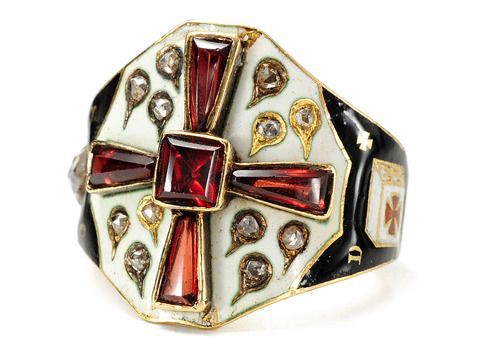
Dating to the early 1800s, this 18k yellow gold-and-enamel Freemason’s ring is loaded with symbolism. The dealer consulted with London’s Museum of Freemasonry to decipher the motifs it features, thinking it may have been a mourning piece for a high-ranking member of the order. Central to the design is a garnet cross (possibly referencing the Knights Templar), which divides the face into four sections, each featuring three rose-cut diamond teardrops. Those twelve teardrops may represent the twelve apostles and their tears of mourning for Christ. A diamond-set crescent and sun are also featured, and these traditionally signify the heavenly lights and the universe, as well as the universal nature of freemasonry.
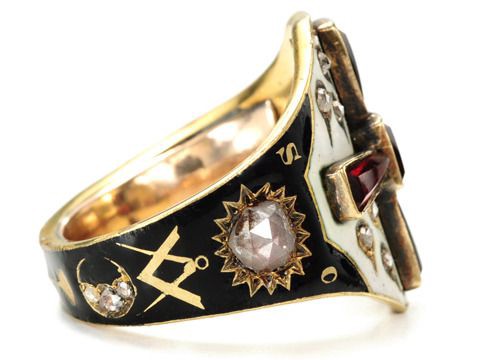
Other symbols, such as the compass within the square, the gavel, the crossed swords, and the axe are also described on the dealer’s site, if you want to click through for more info. Creepily interesting is the “G” (for geometry) within a six-pointed star, which, per the dealer’s site, “usually refers to the Holy Royal Arch, which is the fourth of the Masonic ceremonies related ‘to finding the vault in the ruins of the Temple of Solomon.’”
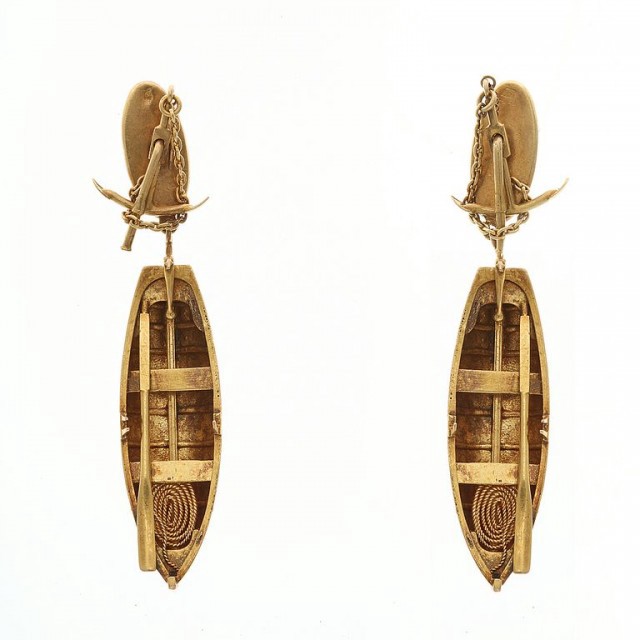
These French rowboat earrings are so wonderful I can’t stand it. Circa 1890, they’re perfectly modeled tiny rowboats, with realistic oars, ropes, and anchors, all in 18k gold.
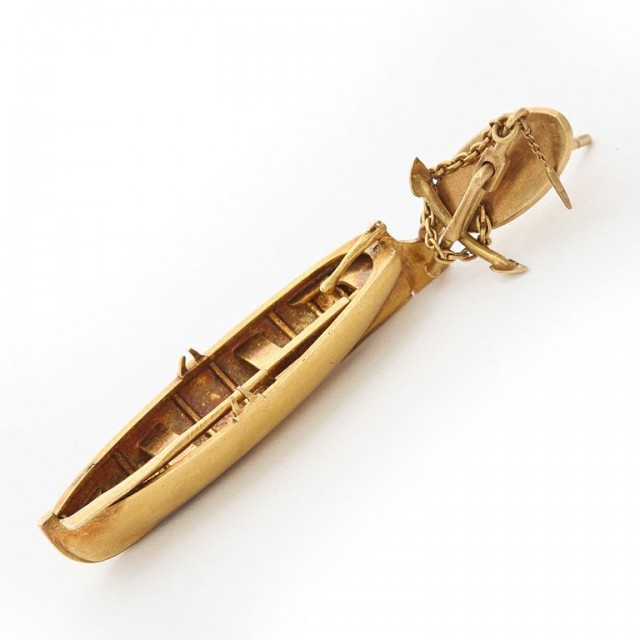
I know I’m always going on about why I love antique jewelry, but pieces like this make me fall in love with it all over again. I can’t help but imagine the woman who would wear such earrings, and the sense of humor she undoubtedly possessed.
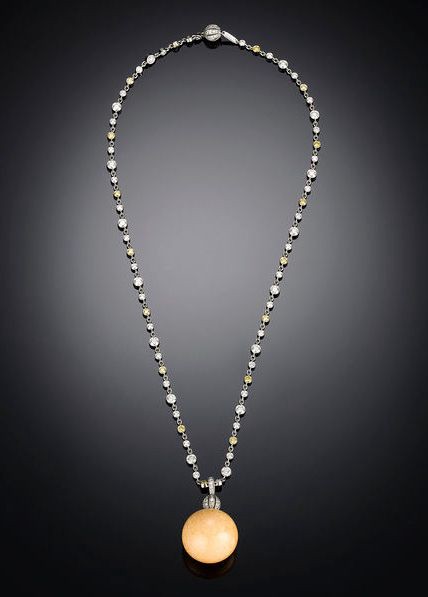
Yes, I know it looks like a gumball, but this necklace is actually by Tiffany & Co., and that gobstopper is an exceptionally rare and desirable melo melo pearl. These pearls (which, like conch pearls, don’t actually contain nacre like the pearls we’re used to) are formed by the Melo Melo, or Indian volute snail. The pearls are entirely natural, and they’ve been popular in Asia for many years but are only now being snapped up here in the US. They range in color from tan to dark brown, but this orange color is the most desirable, and they’re always very large and very round. Tiffany has suspended this one from a platinum chain studded with complementary yellow and white round-cut diamonds (6.50-carat total weight).
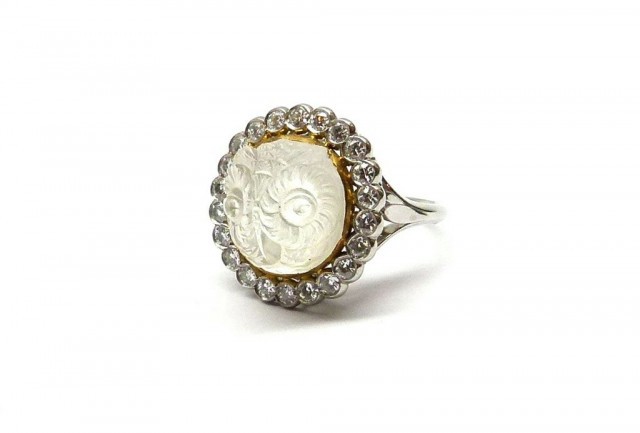
Circa 1880, this ring features a large moonstone carved into the shape of an owl head and set within an ornate diamond frame.
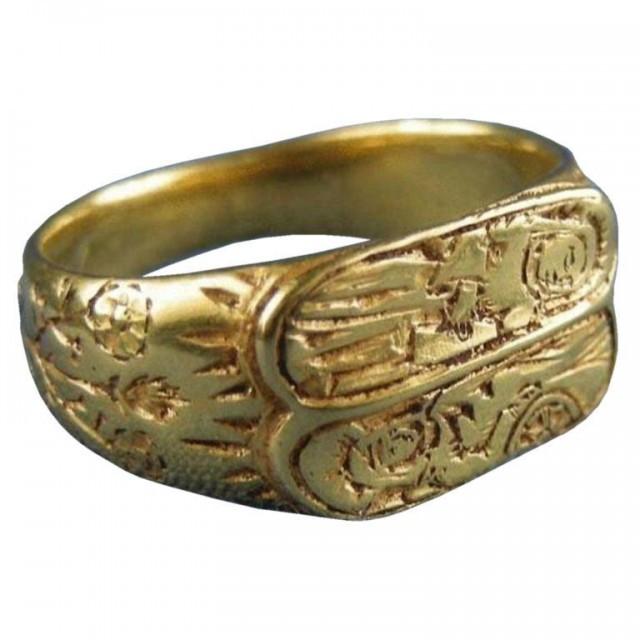
Circa 1470, this gold iconographic ring features depictions of Saints Catherine of Alexandria and Catherine of Siena, both of whom were thought to have the power to protect from sudden death. Apparently, it was only necessary to view their images each day to receive this protection — a huge benefit to a people who lived in fear of dying suddenly without priestly absolution.
The saints are identified by the items they’re pictured with — an image code very familiar to anyone who’s studied art history. Catherine of Alexandria is shown wearing a crown and with a wheel beside her, because, as the story goes, she was a 4th-century virgin princess who refused to marry the Emperor Maxentius and was sentenced to death via spiked wheel. The wheel was miraculously destroyed in answer to her prayers, however … so she was beheaded instead. (The spiked wheel later became known as the Catherine Wheel, which was also a band that I listened to quite a bit in the early ’90s.)
The dealer identifies the other saint as Catherine of Siena, although I don’t think she’s usually pictured with a book. It works, however, as she was a Catholic philosopher and theologian renowned for her letters to Pope Gregory XI as well as her book The Dialogue of Divine Providence (c. 1377–78). True story: I studied in Siena while in college, and witnessed first-hand a procession through the streets following a priest who was holding St Catherine’s thumb aloft. Get rid of your relics, seriously, they are revolting.
Getting back to the ring, the words “en bon an” (which is generally translated as “a good or happy new year”) are engraved inside. This is common to a number of medieval rings, and indicates that it was probably given as a New Year’s gift.
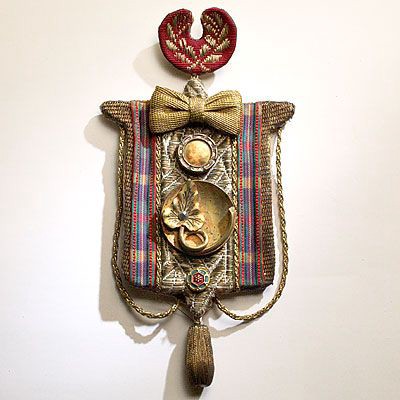
This vintage award pin is handmade with wire ribbon and roping and decorated with a bow, a small cameo, and a leaf plaque. It’s also signed on the back by the maker. SO cute.
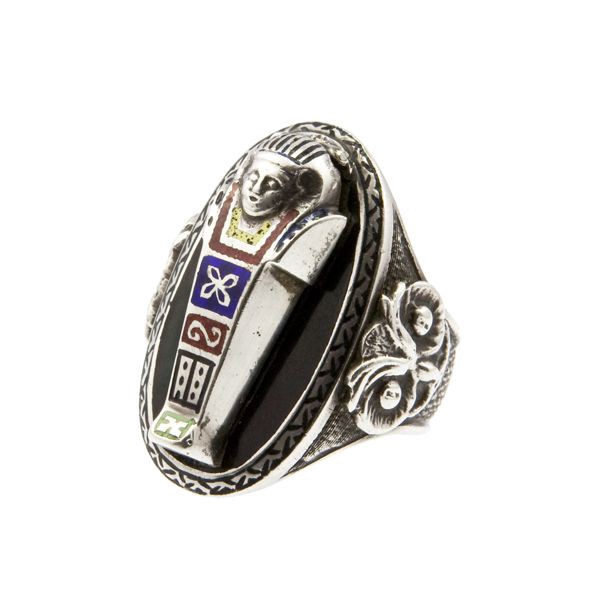
“Egyptomania” has arisen at various points in history and strongly influenced decorative styles; the 19th century saw Egyptian themes come into vogue both in the first half of the century and then again in the second half, as archaeological discoveries and a quest for all things exotic fed demand. The style continued to simmer — particularly in Western American architecture — and exploded yet again in 1922, when the British Egyptologist Howard Carter discovered the tomb of Tutankhamen.
This sterling silver ring, circa 1920, combines Egyptian Revival with Art Deco. It depicts a sarcophagus, with detailing in black, red, yellow, and blue enamel, set upon a cartouche of black enamel. A finely detailed owl head highlights each side.
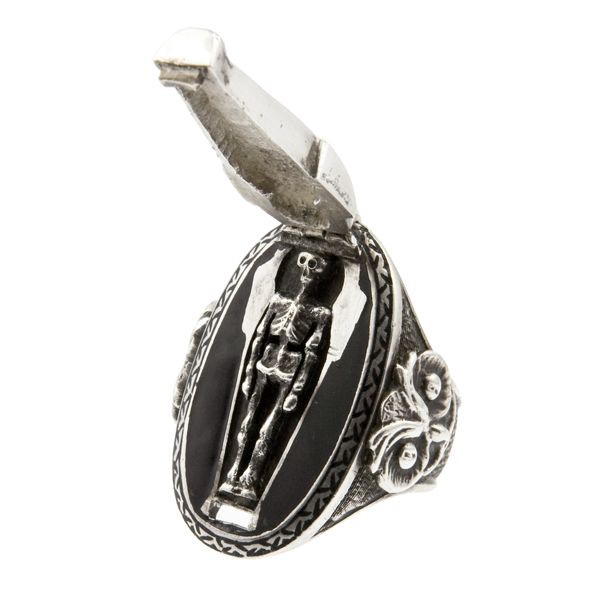
Even better: the sarcophagus opens, and there’s a tiny little skeleton inside.
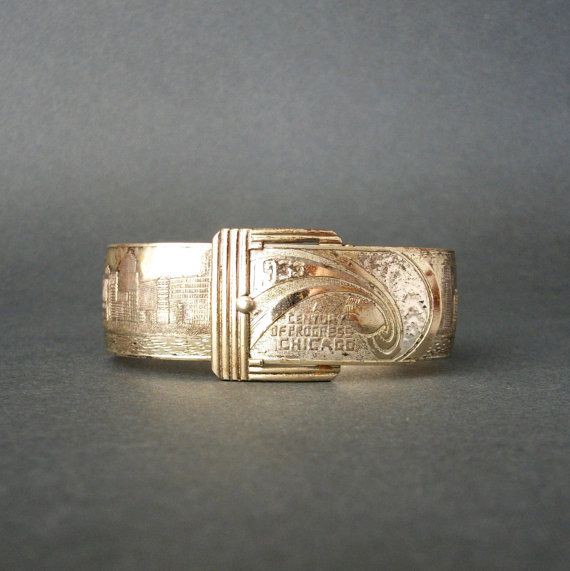
I’ve recently had to spend a lot of money unexpectedly (and not for fun), so all of my reserves are gone, otherwise I would never even THINK of showing this to you because it would already be mine. It’s an Art Deco buckle bracelet from the Century of Progress International Exposition, a.k.a. the Chicago World’s Fair of 1933.
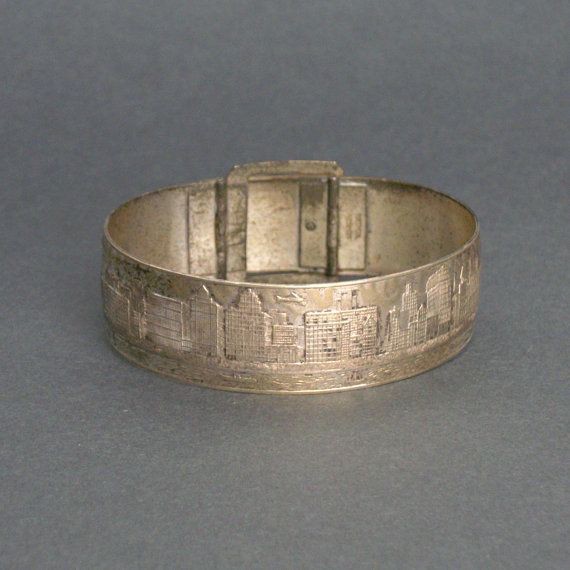
In finely detailed brass (with a somewhat worn silver wash), it features an unbroken view of the fair’s skyline from the lake, depicting boats in the water and zeppelins flying overhead. Gorgeous.
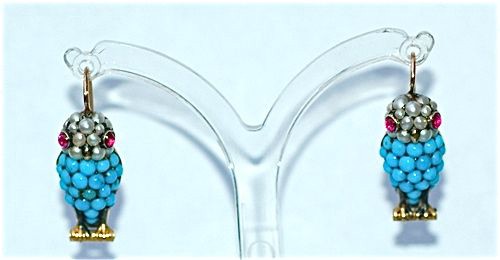
I really don’t set out to feature any particular theme in these columns, but occasionally it happens that, when I search for items to include, a theme forms on its own. So, yeah, more owls. But I ask you, how could I not include these?
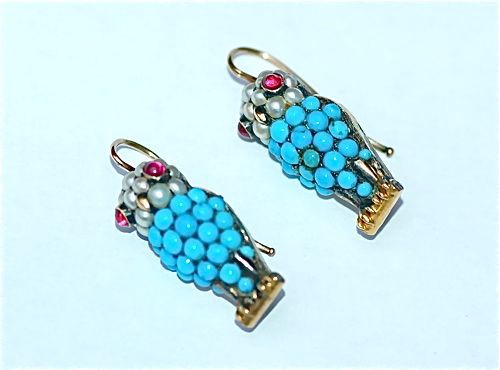
Circa 1860, these ridiculously cute owl earrings are gold, pave-set with Persian turquoise and pearls, with cabochon ruby eyes. They’re also tiny — including the wire, they’re only an inch long, and one-third of an inch wide. GAH.
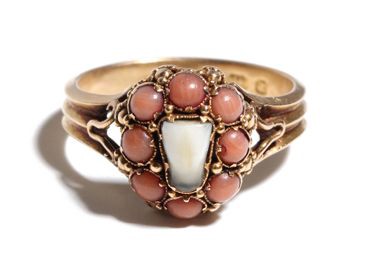
This ring dates to the mid 19th century, and is an example of another Queen Victoria-driven jewelry trend: that central stone is actual a child’s tooth! Victoria had multiple pieces of jewelry designed to incorporate the teeth of her own children, and the style became popular among her followers. Often the tooth was surrounded with coral, which was believed to provide protection from the evil eye. This ring has already been sold, but do click through check out the dealer’s other items; it’s a good collection.
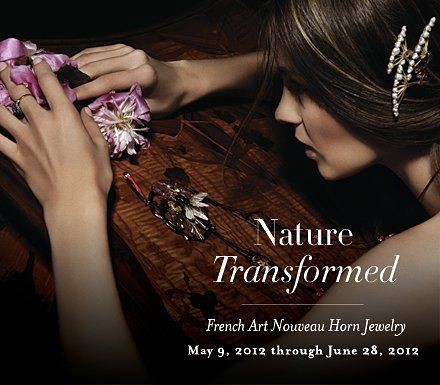
If you’re in New York, there’s still time to stop by Macklowe Gallery to see their terrific “Nature Transformed — Art Nouveau Horn Jewelry” exhibit. It’s open until June 28, and showcases over 50 rare pieces of French horn jewelry.
Horn was a very popular material during the Art Nouveau period, as it could be twisted and manipulated into the sinuous forms that were so central to the style. Many of the pieces in the exhibit take the form of pendants, and natural and floral motifs abound. Insects are particularly shown to great effect, with the translucency of horn lending the perfect delicacy to a dragonfly wing or cicada body. Brooches, hair ornaments, and other decorative accessories also are featured. If you go, be sure to visit the rest of the gallery, which is a treasure trove of glorious jewels and stunning Art Nouveau furniture and sculpture.
Previously: Ruby Roses and the Memento Mori.
Monica McLaughlin’s favorite saint is Lucy, because she carries eyes around on a plate.